Photo of Red-lipped batfish. | Source: instagram.com/discoverychannelin
Nature’s beauty and uniqueness know no bounds. And these creatures only prove how vivid life on Earth is. From an Axolotl to a Jerboa, here are 40 creatures that look out of this world.
Advertisement
With over 8 million animal species, our planet has no dearth of unique, bizarre-looking creatures. While some might be found in the unknown depths of an ocean, some might be thriving in the unbearable temperatures of the desert and icy regions. To make the journey of getting to know these animals a bit easier, we’ve compiled a list of 40 creatures that look out of this world! Ready? Let’s get started!
#40. Aye-Aye
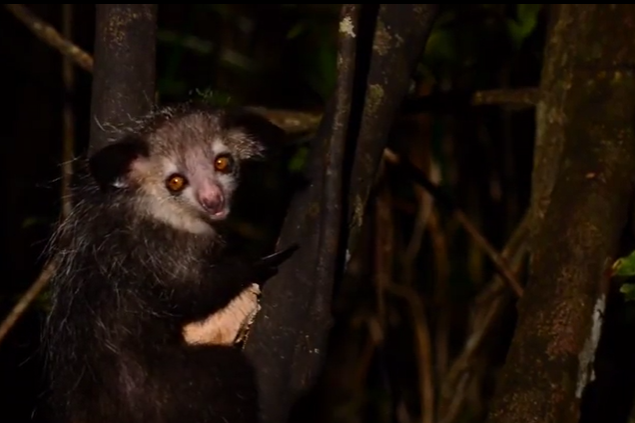
Photo of Aye-Aye. | Source: instagram.com/natgeowild
Advertisement
Found on the island of Madagascar, Aye-Ayes are rare animals that may not give you the feeling of primates at first. But they are related to apes, chimpanzees, and even humans!
Known for their bushy tail, which is larger than their body, and a black or dark brown hue, Aye-Ayes are slender creatures with large, sensitive ears. You may find them dangling from branches—all thanks to their opposable big toes, which lack pointed claws, unlike their fingers and other toes.
Often catching attention for their out-of-the-world appearance, no wonder this creature tops the list!
#39. Red-Lipped Batfish
Advertisement
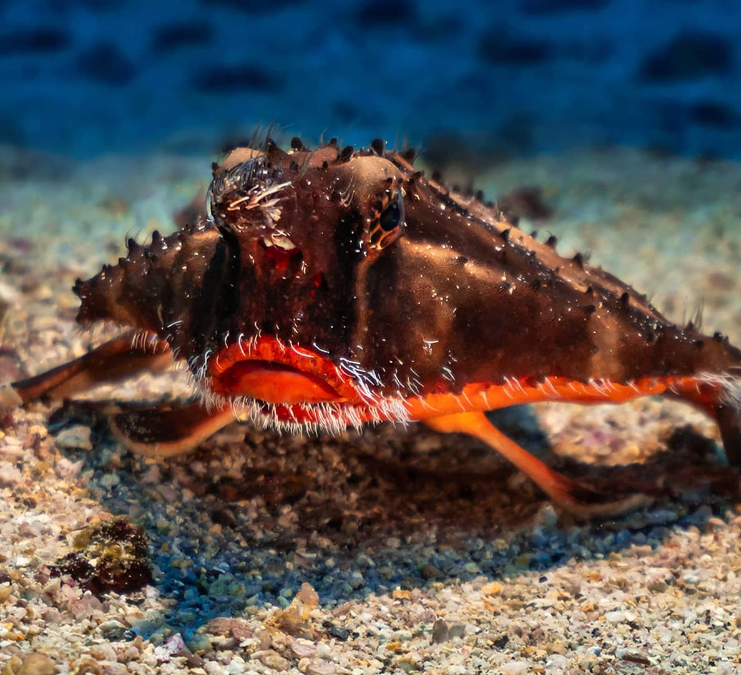
Photo of Red-lipped batfish. | Source: instagram.com/discoverychannelin
Looking like they’re wearing lipstick, Red-Lipped Batfishes are often found on the ocean floor in the vicinity of sandy bottom reefs. Their bodies are usually light-brown with a back that looks grayish in color.
Advertisement
They can easily swim in order to find food for themselves, and their fins work as pseudo-legs, which they use for walking while surveying their surroundings.
#38. Dumbo Octopus
Advertisement
Making for one of the strange-looking creatures on Earth, a Dumbo Octopus might seem adorable to some. Their long fins that protrude like ears are the reason why they’ve been given the name Dumbo Octopus. And their small size, in addition to their bell-shaped body, short arms, and pale hue, only adds to the uniqueness of this sea creature.
Often found several feet below the water surface, Dumbo Octopuses live in the darker and deeper ocean regions worldwide. They are also the deepest-living octopus known to humans.
#37. Blobfish
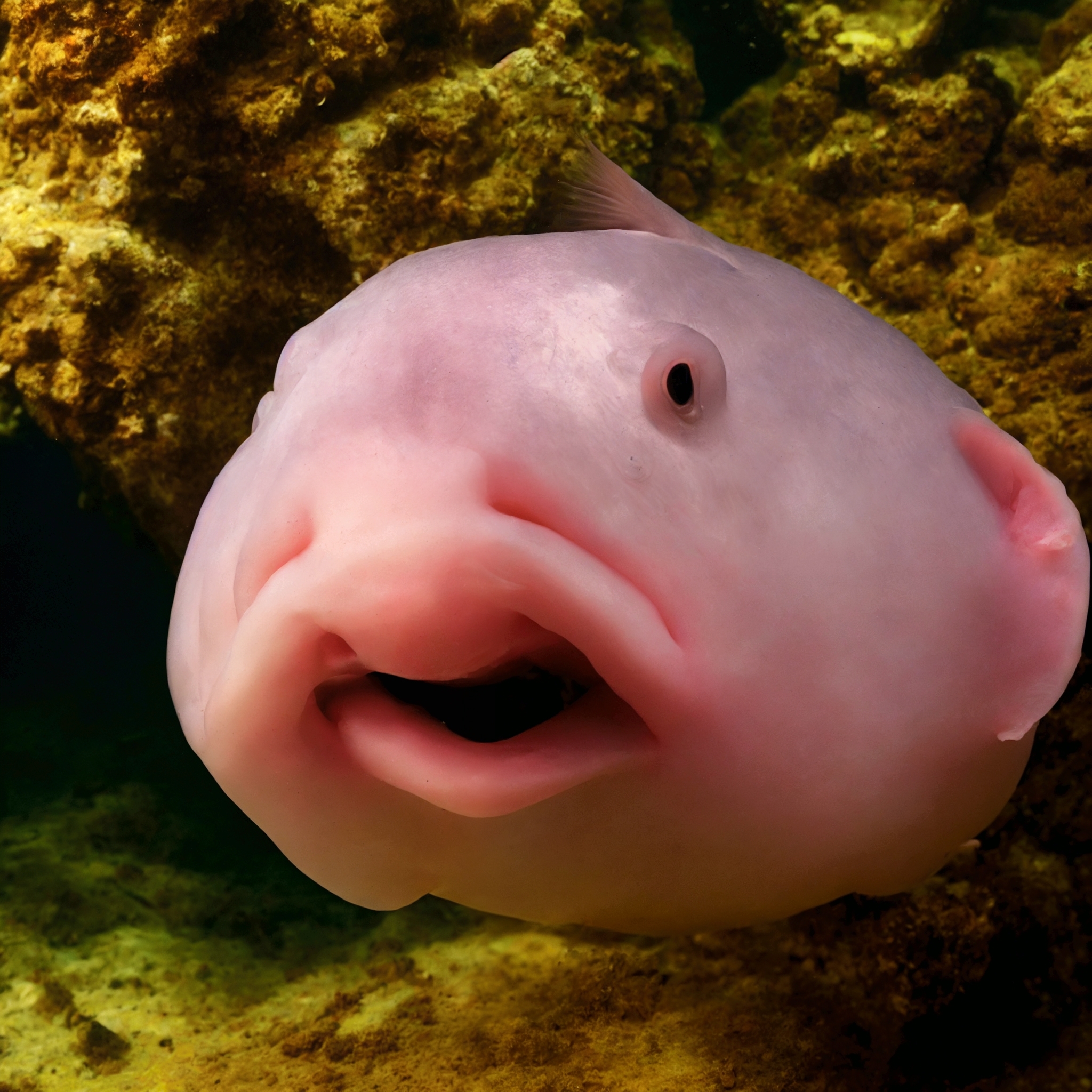
Photo of Blobfish. | Source: Shutterstock
Advertisement
A sagging nose, a pale pink blob of a body, a droopy mouth—nothing about a Blobfish seems really captivating, so it isn’t surprising that this creature was deemed the ugliest animal in 2013.
Often found in depths of the ocean water, a Blobfish has a strange body which is considered a result of the decompression damage they endure when they’re not in their natural high-pressure environment.
They feed on microscopic bacteria, urchins, crabs, and other sea creatures. Yet, they don’t spend a lot of energy on hunting, and though they might seem scary, they have no teeth and don’t bite!
#36. Axolotl
Advertisement
Advertisement
As strange looking as an Axolotl is, it also carries a unique story with itself. The legends consider an Axolotl as the Aztec god of fire and lightning, who disguised himself in the appearance of a salamander in order to save himself from being sacrificed.
Donning a unique appearance with feathery gills, webbed feet, and a fin that runs down the length of their body, these amphibians can stay “young” their entire lives! All credit goes to their ability to regrow the lost limbs.
#35. Tarsier
Advertisement
Possessing a tiny body and giant plate-like eyes, a Tarsier is a shy creature. Found primarily in the Philippines, they make the world’s second smallest primate and are nocturnal in nature.
They also possess incredible hearing, which is one of their primary hunting tools. As tiny as 6 inches in height, their giant eyes often make them look adorable and unique. Also, they can rotate their heads 180 degrees to locate their prey!
#34. Star-Nosed Mole
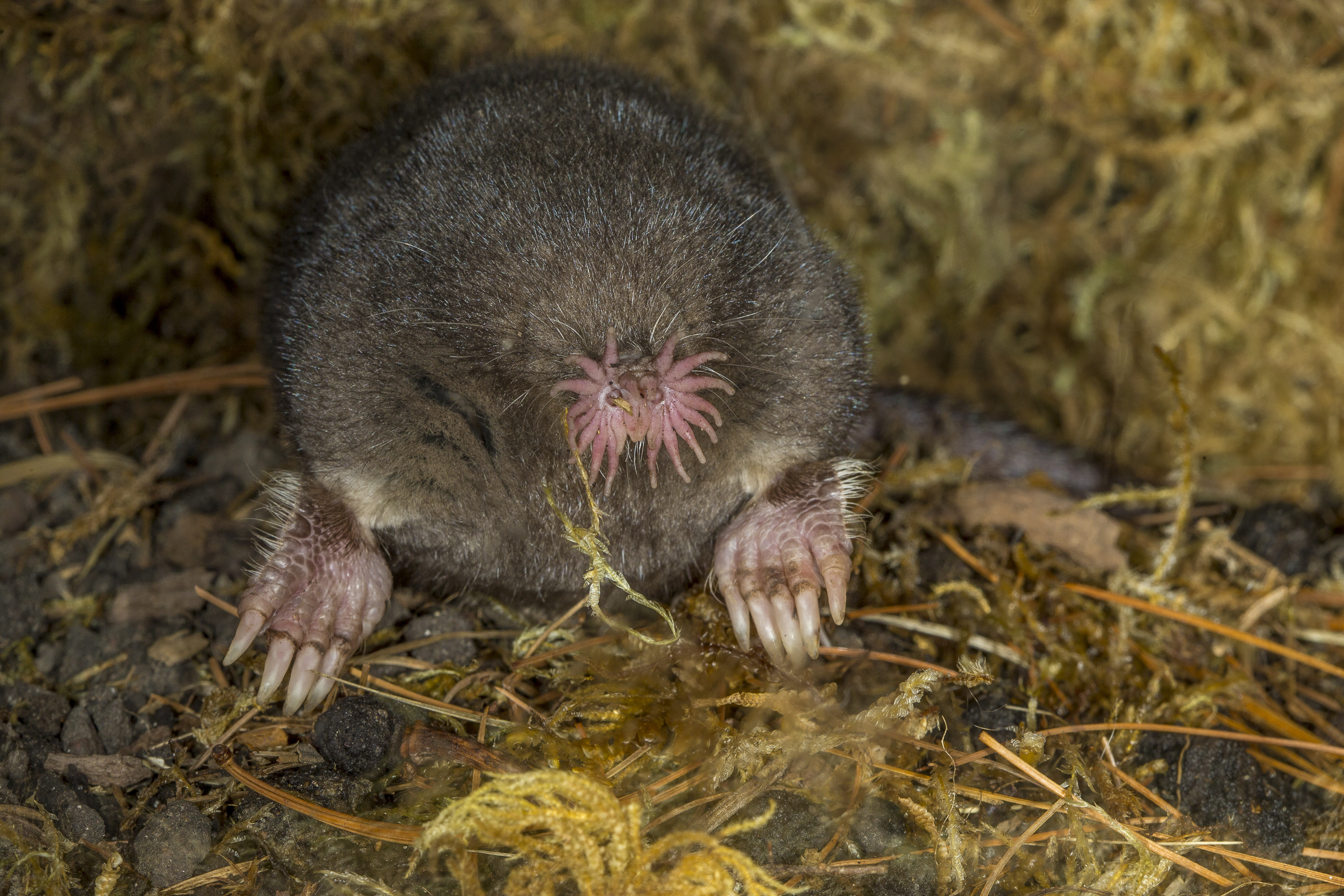
Photo of Star-nosed mole. | Source: Getty Images
Advertisement
Definitely one of the weirdest-looking creatures, a Star-Nosed Mole looks like its face has been replaced by a tiny octopus. This animal is nearly blind, but that’s no hurdle to its fantastic speed.
A Star-Nosed Mole can locate and gobble down its prey in less than a second! And not just that, but you see its star-shaped head? It hits it against the soil while hunting for its prey and can reach 10 to 12 different places in one go!
#33. Leafy Seadragon
Advertisement
Often possessing a brown or yellow color, a Leafy Seadragon hails from the off-south and east Australian waters. Owing to their leaf-like shape, they perfectly hide themselves in seaweeds, and they are related to the pipefishes and seahorses.
Apart from their unusual appearance, another interesting thing about this creature is that their male gender is responsible for childbearing!
#32. Hairy Frogfish
Advertisement
A Hairy Frogfish is often found in warm waters. With their entire body covered with spine-like hairs, these fishes can easily camouflage in seaweeds.
Like Red-Lipped Batfishes, they don’t use their fins for swimming; instead, they use them for walking along the seafloor.
While they sometimes sneak on their target, they usually lure their prey to themselves and gobble them down immediately.
#31. Fangtooth Fish
Advertisement
Justifying their name, Fangtooths have long, scary fangs. They also possess big jaws and massive heads, and their appearance is quite terrifying. But Fangtooths have smaller eyes and horrible eyesight.
They are often found in deep sea waters and feed on smaller fish and even squids. But in general, these fishes will feed on anything they can kill! Let’s avoid them, yes?
#30. Vampire Squid
Advertisement
Unlike its terrifying name and appearance, a Vampire Squid is not one of those creatures terrorizing the deep. Instead, they feed on drifting particles, which is also known as “marine snow.”
In order to protect themselves, they invert their umbrella-like cape—this species is primarily hunted by diving predators and big fishes. In nature, a vampire squid is actually harmless, though its appearance indicates otherwise.
#29. Jerboa
Advertisement
Looking very similar to rats, Jerboas have thin bodies and long tails. Amongst all their species, some characteristics are highly variable, like the size of their ears and the number of hind toes.
However, one thing that remains constant is that their forelegs are short, and their hind legs are long. But don’t get fooled by their miniature look! They can leap up to 10 feet when alarmed!
Jerboas rest by the day and hunt by night.
#28. Mata Mata Turtle
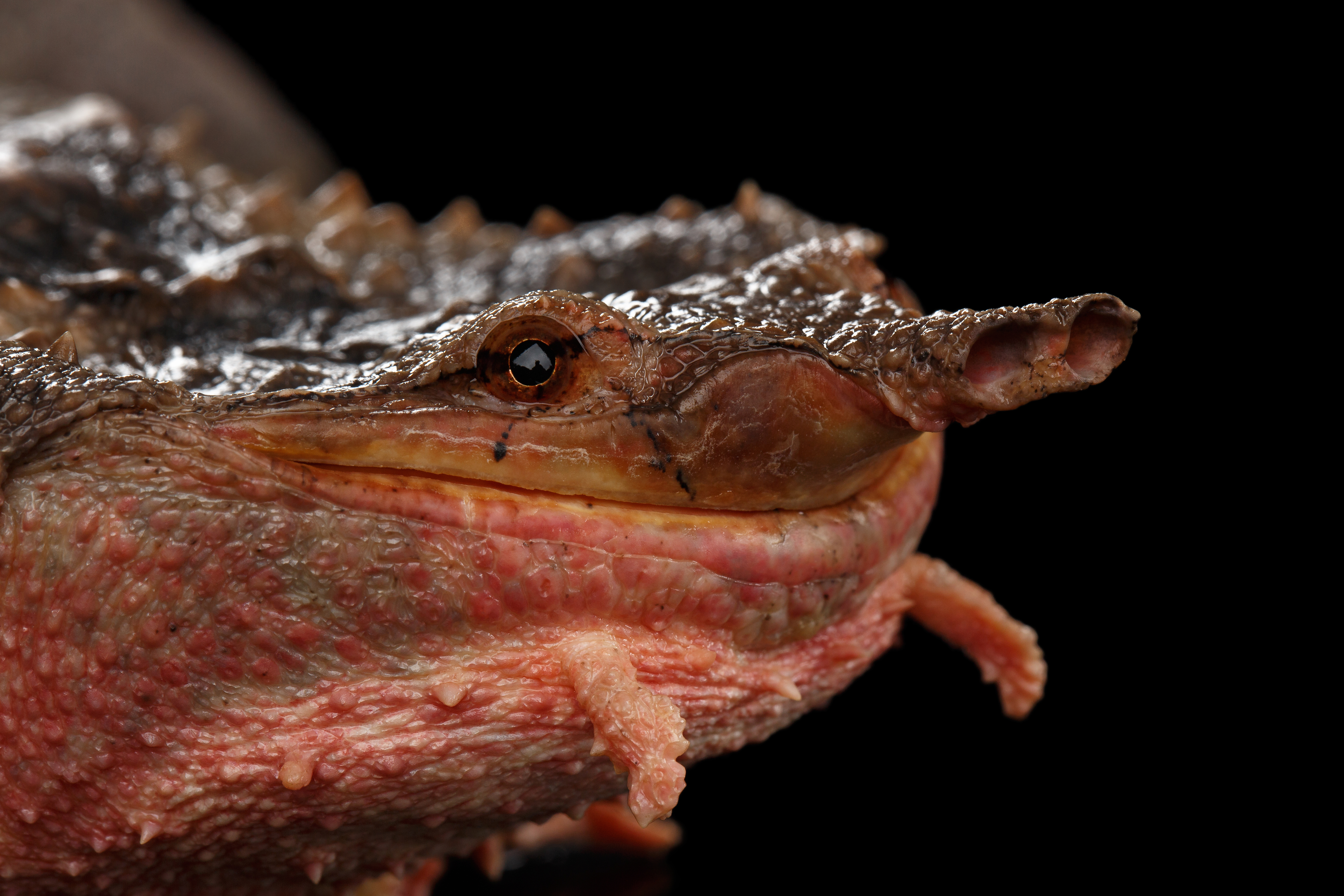
Photo of Mata mata turtle. | Source: Shutterstock
Advertisement
Bearing a rough shell covered in bumps, the Mata Mata turtle is a South American turtle. Their skin texture is uneven with bumps and ridges, and they have a flat head but a large mouth.
Their eyes are actually small, and they have extremely poor eyesight. However, they have other sensory aids to their rescue. A Mata Mata turtle is a carnivorous feeder, mainly consuming small fishes and invertebrates.
#27. Pink Fairy Armadillo
Advertisement
A rare nocturnal animal discovered in central Argentina, the pink fairy armadillo, is small enough to fit in the palm of a human hand.
Because they are shy, they burrow in the ground and are difficult to spot. Central Argentina is the place to go if you want to give it a shot at finding them!
#26. Naked Mole-Rat
Advertisement
These mammals are nearly hairless and possess a pinkish or grayish-pink color to their skin. Often giving the look of a baby walrus, these rodents have short heads but large incisions and powerful jaw muscles.
Often feeding on underground plant parts, Naked-Mole Rats obtain all their water through their food. Yes, a Naked Mole-Rat doesn’t drink. And their diet is usually high in cellulose. Also, they regularly practice the ingestion of feces for maximum uptake of nutrients.
#25. Proboscis Monkey
Advertisement
The unusual thing about Proboscis Monkeys is definitely their long noses, which you might not know are used to attract their mates.
Fleshy in nature, these noses create an echo chamber that makes the monkey’s call more amplified, impressing the females and scaring the male rivals.
A Proboscis Monkey tends to live in the vicinity of swamps, island rovers, or coastal mangroves. They only head to the land when they need to find food for themselves.
#24. Japanese Spider Crab

Photo of Japanese spider crab. | Source: Shutterstock
Advertisement
Possessing long legs and the longest lifespan amongst the crabs, the Japanese Spider Crab has the title of the largest crab. They can live up to 100 years and are mainly located in the waters around Japan.
They also qualify as the world’s largest arthropods, and they are omnivorous in nature. Japanese Spider Crabs aren’t very energetic as far as hunting is concerned, and they’d happily feed on dead animals or have a plant-based diet.
Although they look scary, they are harmless.
#23. Sunda Colugo
Advertisement
Squirrel look-alikes Sunda Colugos are either found alone or in small groups that aren’t very tightly connected. These animals are arboreal in nature, and often in the daytime, you’ll find them sleeping within the dense foliage of the treetops or in the holes found in trees.
When it comes to Sunda Colugos’ diet and nutrition, they are herbivores and like feeding on the softer plant parts like flowers, young leaves, buds, and fruits. While also known as the flying lemur, they can’t really fly.
#22. Tongue-Eating Louse
Advertisement
As the name suggests, a Tongue-Eating Louse actually eats tongues! What it does is get inside a fish’s mouth, make an attack, and replace the tongue.
While this parasite doesn’t affect humans, it doesn’t leave the fish alone just after replacing its tongue. They then feed on the mucus of the fish.
Currently, it’s the only known case where the host’s organ is replaced by a parasite. And they are primarily found in the waters of the Atlantic and Pacific oceans.
#21. Amazonian Royal Flycatcher
Advertisement
Famous for their beautiful, bright crests, Amazonian Royal Flycatchers are found in at least 9 counties worldwide.
Very cleverly, these birds hang their nests from vines above the waters to protect their eggs from predators.
They feed on flying insects like dragonflies and cicadas, and you’ll either find them alone or in pairs.
Also, Amazonian Royal Flycatchers communicate via slow, melancholic whistles.
#20. Umbonia Spinosa
Advertisement
Yes, its name does sound like a weird magical spell, but well, magic and this strange-looking bug have nothing in common. The weird-looking helmet you can see atop its head differentiates them from other bugs and gives it a unique look.
They are also known as thorn bugs or treehoppers, and their mouth regions are sharp, which helps them easily penetrate the plants and stems and suck the spa outta them. Also, Umbonia Spinosa uses vibrations for communication that humans can’t detect.
#19. Glaucus Atlanticus
Advertisement
Having several names for itself—blue angel, blue dragon, and sea swallow—this creature uses its blue hue to camouflage against the sea’s blues.
They also have a great defense mechanism, and they form something called “blue fleets” that assists them in feeding and mating.
If you are looking for a pet, there may be better choices out there than Glaucus Atlanticus. Why? Because you’ll hardly find their food at any pet store. They feed on venomous siphonophores like the violet snail and blue button jellyfish.
#18. Indian Purple Frog
Advertisement
With strong forelimbs but weak hind legs, an Indian Purple Frog has a purple-gray hue to its skin. As far as their diet is concerned, they mainly feed on termites.
Also known as the pig-nose frog, it’s mainly found in the Western Ghats in India, and you won’t see these frogs on the surface except during monsoons, which is their mating season.
Their tiny heads and bloated stomachs are what make them a part of our out-of-this-world list of creatures.
#17. Tardigrade (Water Bear)
Advertisement
Considering their strange appearance, it’s no wonder the microscopic Tardigrades have made it to this list. As far as their regions of habitation are concerned, you’ll find them anywhere and everywhere, ranging from the deep sea to sand dunes.
And besides being called water bears, they are also sometimes nicknamed “water piglets.” But while they can easily survive in extreme conditions of the environment, research has shown that exposing tardigrades to hot waters for extended periods can kill them.
Tardigrades primarily feed on bacteria, plant cell fluids, and animal cells.
#16. Sea Pig
Advertisement
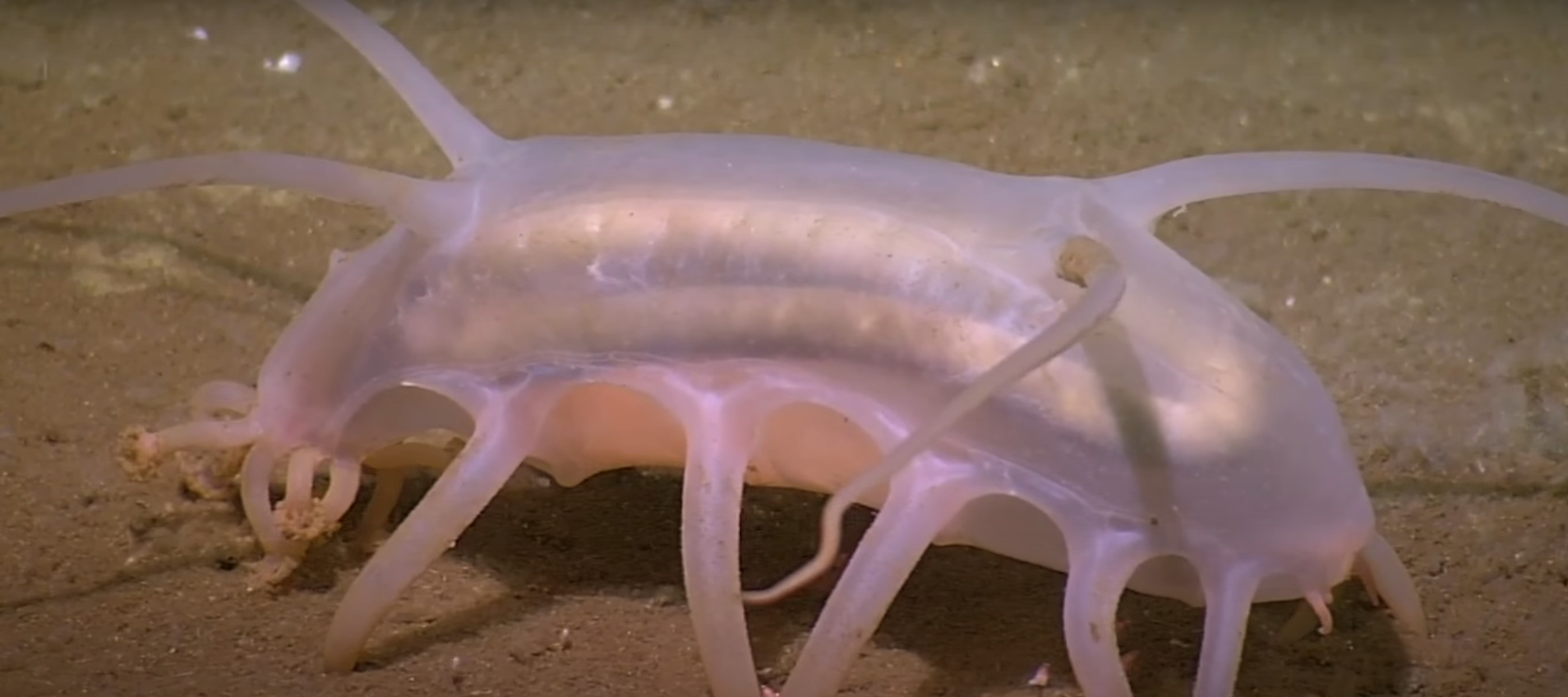
Photo of Sea pig. | Source: youtube.com/WIRED
Only four to six inches long, sea pigs can literally fit in your palms. Owing to their oval-shaped plump, pinkish body, they get the name “Sea Pig.”
Advertisement
They are found in the ocean’s deepest parts, and while they may look strange, they haven’t been unknown to mankind. You might not know them, but scientists have been familiar with these creatures for over 100 years!
The pipe-like extensions on either side of their body are used by them for walking around and can be inflated and deflated. They feed on decaying animal or plant matter.
#15. Kinkajou
Advertisement
Found in the Central and South American tropical forests, Kinkajou looks very similar to a monkey. Also known as “honey bears,” they have obtained this name owing to the fact that they sometimes raid bee nests.
Apart from their appearance, their unique traits include their ability to turn their feet backward, which enables them to run along the branches in either direction efficiently.
A Kinkajou is known for being a carnivore; however, they primarily feed on fruits and nectar. Still, it’s best to keep a safe distance because yes, they bite!
#14. Hagfish
Advertisement
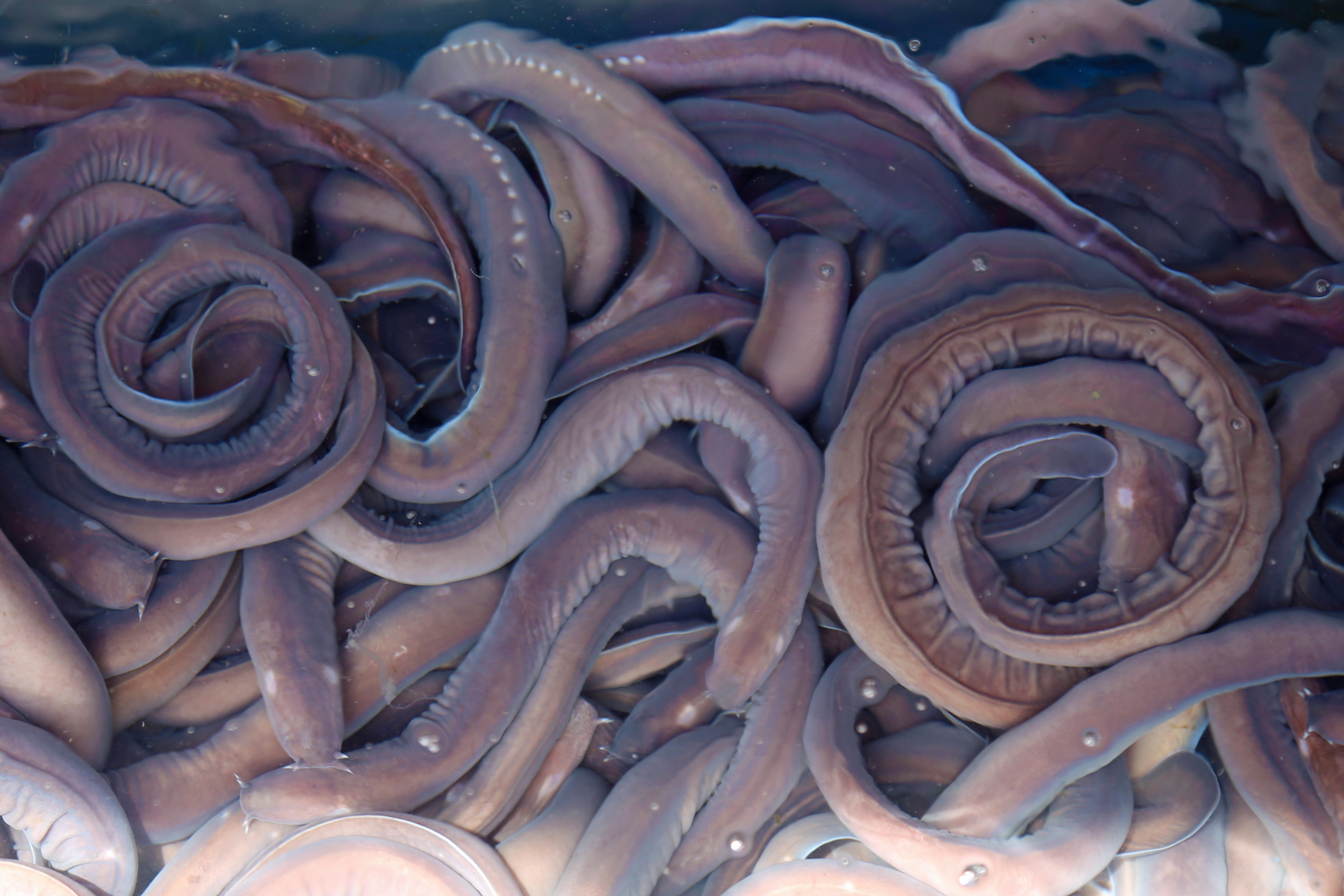
Photo of Hagfish. | Source: Getty Images
Not eye-pleasing, right? Well, if it weren’t for its weird slimy appearance, it wouldn’t have been added to this list. But here we are.
Advertisement
First of all, did you know that a hagfish has a skull but no spinal column? Yep, that’s right! They absorb the food via their skin. Also, they have loose skin, which makes it easier for them to tie themselves into knots without sustaining injuries.
Wait! They also have two nicknames—Slime Eels and Slimy Eels. That could have been better!
#13. Alligator gar

Photo of Alligator gar. | Source: Shutterstock
Advertisement
Yes, they do have the word “alligator” in their name, but no, they are not related to alligators. Their crocodile-like head, along with their sharp teeth, is the reason how they got their name.
Also, did you know that these groups date back not 10, not 20, but 100 million years? Their bodies are covered in scales, and the heaviest one among them is said to have weighed more than 300 pounds!
Alligator gars usually feed on fishes, birds, and mammals.
#12. Irrawaddy Dolphin
Advertisement
Looking like a child’s bad drawing of a dolphin is one of the reasons why it’s considered one of the out-of-the-world looking animals.
You’ll often find them living in coastal areas. But you can also find these downright adorable beings in South and Southeast Asian rivers.
Another exciting thing about Irrawaddy Dolphins is that they are not one of those fussy eaters. They feed on any kind of fish that’s readily available to them, and they also eat squid and octopuses.
#11. Atretochoana (Penis Snake)
Advertisement
Okay, first things first: No, it is NOT a snake. But Penis Snake isn’t the only nickname this creature has received.
Atretochoana is also known as “manaconda” or “floppy snake.” And it’s mostly called a penis snake because it resembles a human penis.
With a snake-like body, these creatures have flat but broad heads, and their nostrils are sealed. While caecilians are usually burrowers, floppy snakes are aquatic. And they typically consume small fishes, marine invertebrates, or worms.
#10. Barreleye Fish
Advertisement
Possessing glowing green eyes in a dome-shaped transparent head, Barreleye Fish looks unusual but interesting.
They usually live in deep sea and temperate waters, and their heads are filled with fluid. But that’s not all about their characteristics, considering their tubular eyes can rotate and that they are colorblind.
At the level Barreleye Fish is usually found, there’s also a group of jellyfish that captures its prey in tentacles. Well, this aquatic creature sometimes steals its food from such groups of jellyfish.
#9. Surinam Toad

Photo of a Surinam toad. | Source: Getty Images
Advertisement
As strange as it looks, it’s also weird in the way it makes an entry into the world. In an unusual birthing process, a Surinam Toad’s baby is ejected from a group of holes in the female toad’s back.
But that’s not the only thing that differentiates it from other toads. They have triangular heads and tiny eyes, and fingers ending in lobes. They usually feed on invertebrates, small fishes, and worms.
#8. Blue-Footed Booby
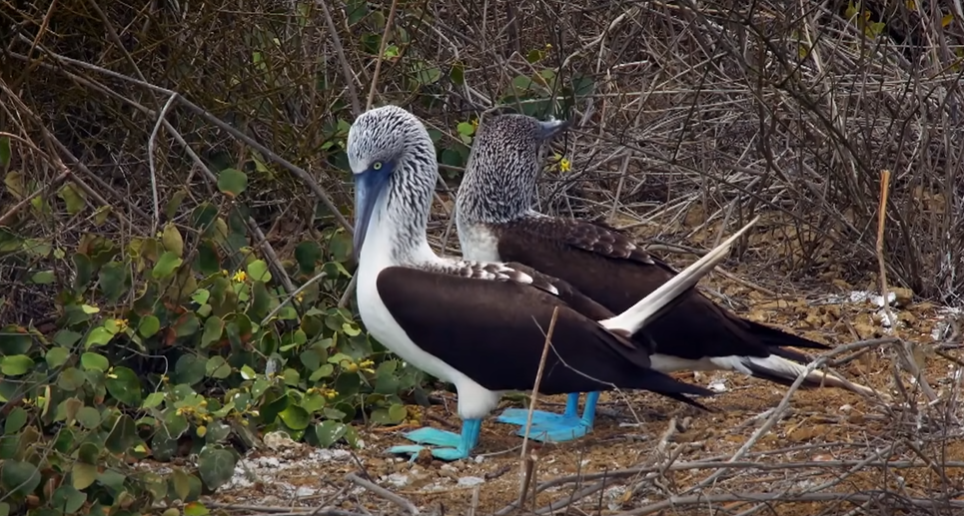
Photo of Blue-footed booby. | Source: youtube.com/Nat Geo WILD
Advertisement
No wonder they have the name “Blue-footed;” look at those feet! But these boobies don’t have such feet right from their birth. As they mature, their foot eventually turns blue. And their feet also play a crucial role in mating.
Another interesting fact about this creature is that when the males want to attract females, they whistle to them. And if you do happen to find these boobies laughing, know that they are cooling themselves. Diet-wise, they mostly eat squid and fish.
#7. Nudibranch
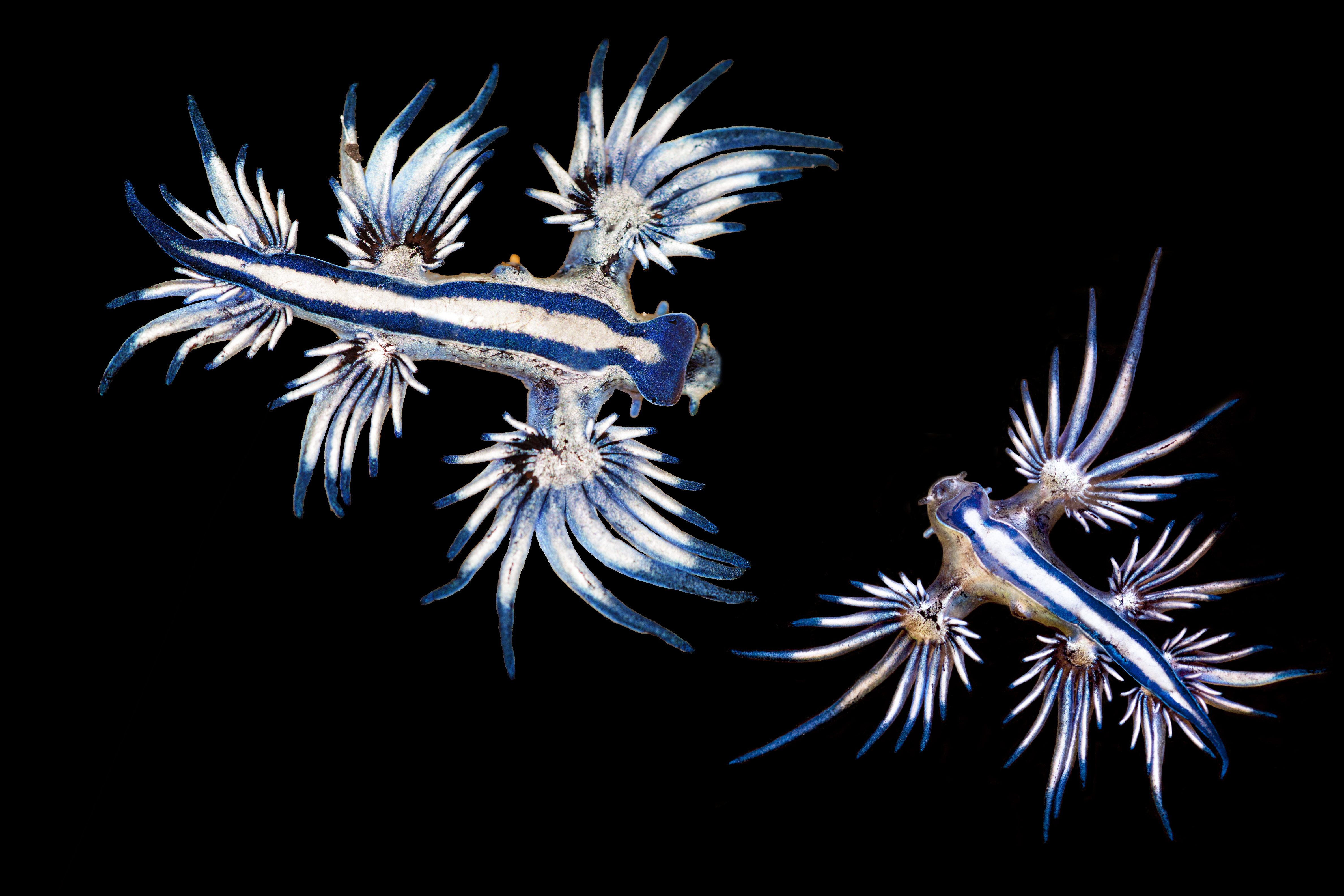
Photo of Nudibranch. | Source: Getty Images
Advertisement
Also popularly known by the name sea slugs, these unique-looking Nudibranchs are often found in various patterns and bright colors.
Using the gills on the undersides of their bodies, they can easily breathe. These shell-less creatures of the aquatic often feed on organisms that have tentacles.
#6. Markhor
Advertisement
Herbivorous in their diet, Markhors are mainly found in Asia. They are diurnal in nature; you’ll find them active in the early mornings and even in late afternoons.
Their beautiful brownish coat and twisted thorns definitely make them unique and give them an out-of-world appearance. And not to forget, their females are redder in color.
#5. Pangolin
Advertisement
The only mammals with scale, Pangolins are typically found in India besides Central and West African regions.
They can roll themselves up when attacked by their predators, and their scaly appearance is the reason why they’re one of the unique-looking animals on this list. In some parts of Asia, people believe their scales have medicinal powers.
Unfortunately, their numbers have really dropped due to poaching.
#4. Venezuelan Poodle Moth
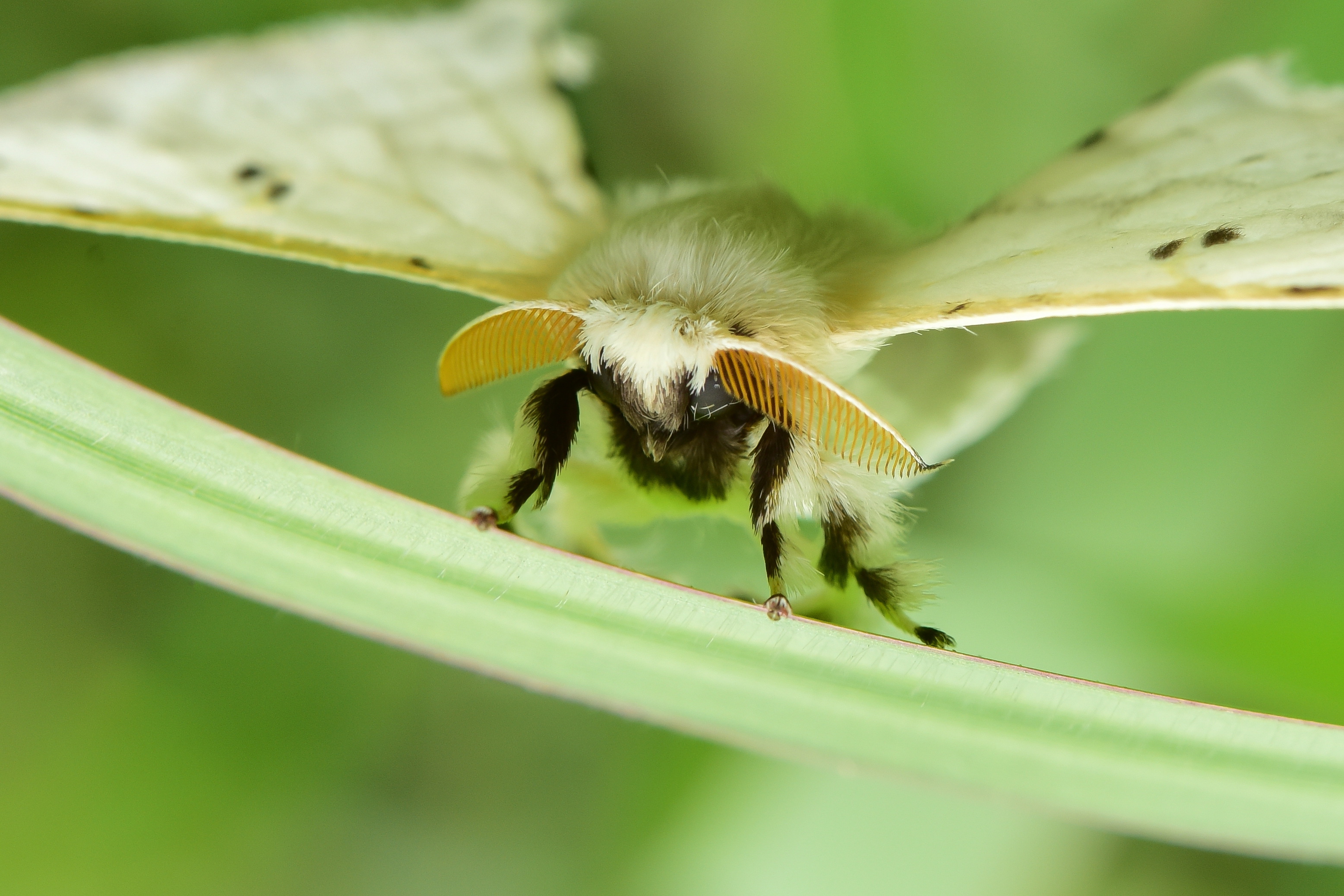
Photo of Venezuelan poodle moth. | Source: Getty Images
Advertisement
As their name suggests, they are mainly found in Venezuela and come under the moth category. Belonging to the class Insecta, the Venezuelan Poodle Moths are usually found in higher altitude regions and don’t have a very long life span.
Diet-wise, they are herbivorous, much like other moths. And one of the several characteristics that make it out-of-the-worldly is its beautiful fur. Apart from that, they have very evident black eyes, which appear more prominent because of their fur.
#3. Blue Parrotfish
Advertisement
Gaining its entry in the list due to its beautiful blue color, a Blue Parrotfish has been found living in the waters of the Caribbean Sea and Atlantic Sea.
Almost 80 percent of their time is gone searching for food. And they have a yellow spot on their head that fades with time. Also, they primarily feed on teeny-tiny organisms.
#2. Panda Ant
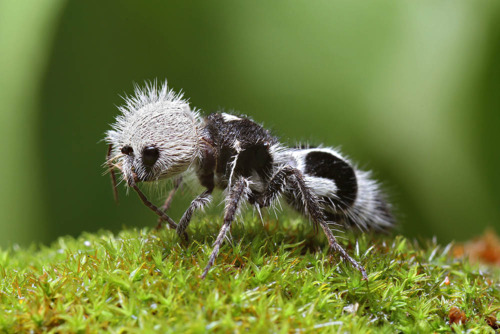
Photo of Panda ant. | Source: Wikipedia/Chris Lukhaup/CC BY-SA 4.0
Advertisement
While most insects terrify humans, Panda Ants are definitely not one of them. However, named after their females’ black and white coloration, Panda Ants have a painful sting, and it’s better to stay away from them.
They’re not found in colonies and don’t have queens, drones, or workers among themselves. Panda Ants are also known as “Cow Killer Ants.”
#1. Magnificent Frigatebird
Advertisement
These indigenous Galapagos Islands birds can soar up to 2,500 meters above sea level and have wingspans of about 2.5 meters. They are known for their aggressive temperament and for stealing food on occasion. Their distinguishing trait is the big red sac on their chests, which they utilize to attract mates!
Well, there’s no limit to the surprises nature offers us. And definitely, many more animals out there are as unique, bizarre, and beautiful as mentioned in this article. We are discovering new species every day, which only allows us to view the exciting creations nature has for us. All we need to do is go out and explore!
Advertisement
Read More: World News | Entertainment News | Celeb News
Anomama








